Leicestershire woodlands replaced the lecture theatre for Architecture MArch students at De Montfort University Leicester (DMU) during their recent partnership with the National Forest (NF).
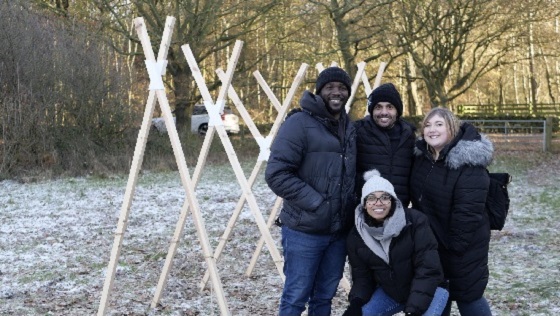
Six groups of students travelled to Swannymote Wood near the village of Whitwick in North Leicestershire before receiving a brief from a NF representative.
Tasked with creating installations which engaged visitors while leaving no trace on the natural landscape, the DMU students designed, trialled and produced interactive installations which were placed throughout the forest.
Each group took their own approach to encouraging members of the public to view the forest site in a different way.
‘Welcome to the Woodlands’
Creating an installation which conveyed the woodland experience, regardless of location, was the basis for one group’s design.
Student Chisomo Tembo said: “We wanted to create something that represented the space that visitors were about to enter. Our design came out of our own observations of the site; undulating surfaces, crossing branches, varying treelines and so on.
“Sustainability was a big part of our brief from the NF. The idea was that our design could be installed, uninstalled, transported and moved to other locations without causing damage to the site.
“We made the installation so that it could even be moved to a city setting to give people an insight into our woodland experience.”
The project was a collaboration between multiple DMU staff members, with each of them bringing their own approach to supporting the students.
Chisomo said: “Our tutors were fantastic throughout the whole project. Their approach to teaching was encouraging and it felt like we were being listened to at all times. The success of the project is testament to how supportive our tutors are.”
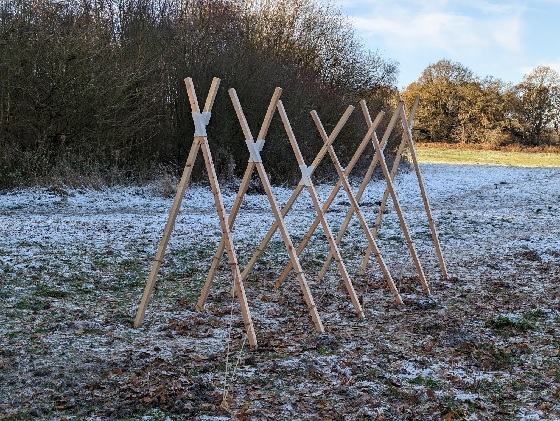
‘Rope Walk’
One group’s response to the heritage and history of the site connected with the NF’s aim to use Swannymote Wood to aid community mental health.
They drew on the Japanese practise of forest bathing for inspiration. The meditative pastime involves entering a forest space and consciously connecting with the surroundings, temporarily removing an individual from the pressures of everyday life.
Yarni Chohan, a student in the group, said: “Our idea was to create a self-guided tour throughout the forest space via a series of braided ropes on posts, which people could follow.
“The sensory experience of the ropes was designed to replicate the meditative quality of forest bathing; to slow the individual down and have them enjoy the process.”
For many of the students, this project was the first time they had been asked to turn their designs from a concept to a physical structure.
“We had to balance the quality and appearance of the project with keeping within our budget. Figuring out how to build, transport and install the piece efficiently was really challenging but seeing it all come together made the last day like a celebration” said Yarni.
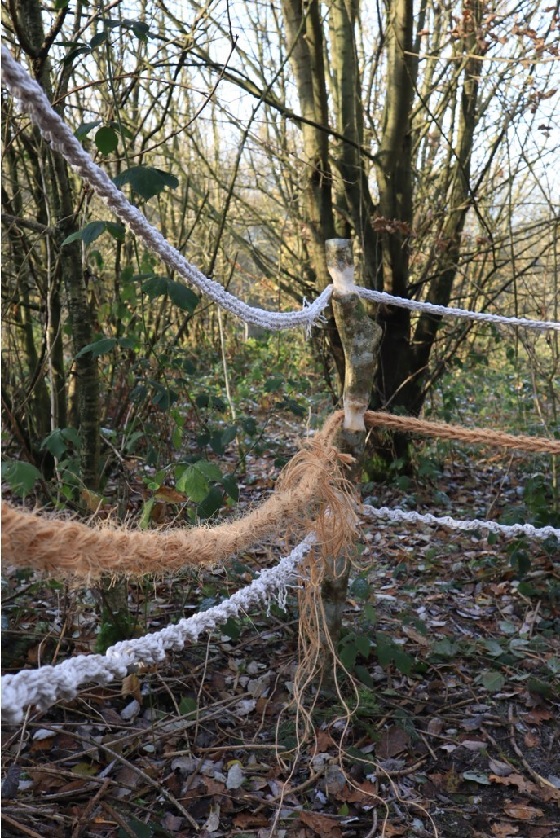
‘Hidden Networks’
The biology of Swannymote Forest inspired this group as they focused on the damaging effects of Ash Dieback, a fungal disease which effects ash trees and is prolific in Swannymote Wood.
Student Lauren Ruff said: “We knew the trees at the site were struggling against Ash Dieback and it was having a significant negative effect on the NF’s efforts to double the number of trees on the site. We wanted to raise awareness of this invisible impact through our project.”
The group created a crocheted structure which represented the symbiotic relationship between the trees and mycelium, a fungal network which connects the entire ecosystem of the forest.
When Lauren taught the rest of her group to crochet in order to create the project, they forged a link to the textile making history of Leicester.
“It was great to be able to include an element of local history in the project and share a practical skill with the rest of the group,” she said.
“This is by far the best group project I’ve ever worked on. The crocheting was a really relaxing activity which allowed us all to sit together and chat, getting to know one another while we worked.”
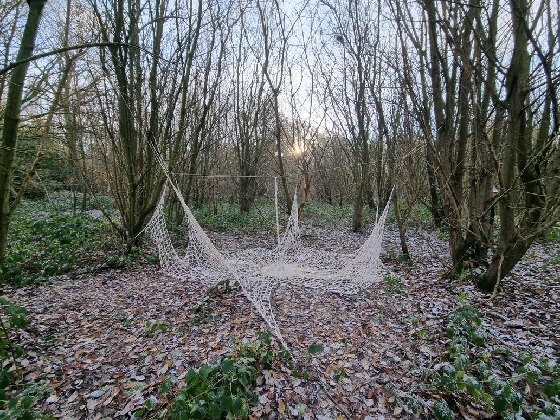
‘The Swannymote Lens’
One group tackled the digitalisation of our society head on, encouraging the public to engage with the forest space via their phones.
Lydia Brant, a student behind the design, said: “We constructed a series of reflective panels around the site, encouraging the public to capture different slivers of it with their phone cameras.
“The idea was that we could use mobile phone photography and social media to document and archive the landscape and its history.”
For Lydia, access to DMU’s facilities was key to the project’s success. “None of us had ever done 1:1 building before but the workshops at DMU are amazing ,” she said.
“We had to think carefully about the size of our structure and how we could transport it. DMU technicians were on hand for anything we were unsure of.”
Lydia also credits her master’s for helping to prepare her for a career as an architect.
She said: “DMU really pushes you to explore your creativity. There are almost no boundaries around how you can develop your own ideas and modules like this one go beyond just teaching us how to use software.
“It’s been an amazing project which has really allowed me to apply all the skills I’ve.”
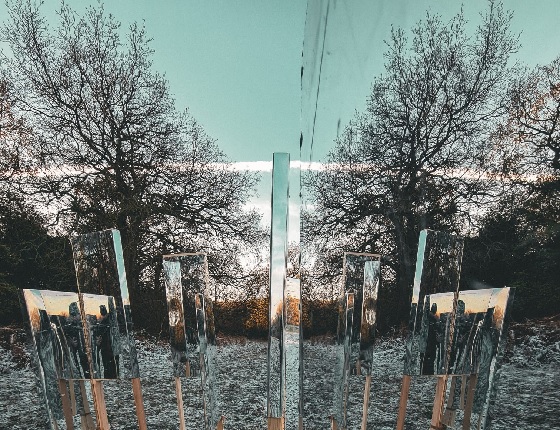
‘Family Tree’
Family and community inspired another of the groups, with an oak tree on the site providing a focal point for their design.
“We looked at African folklore around the custom of meeting points and gathering around special trees. This inspired us to make a ‘family’ of chairs around an oak tree, to provide visitors with a place to gather and rest while enjoying the forest,” said student Marwa Daas.
Sustainability was at the forefront of the group’s mind, and their installation featured recycled furniture made of natural material from charity shops.
Marwa said:“The project wasn’t just about making furniture. We really analysed where we put them and wanted to create an architectural space that enhanced interaction between people and nature rather than just a collection of chairs.
“I really enjoyed the creative side of the project. We could all show our personalities through the design and bring a sense of community to the space.”
After completing her undergraduate at DMU, Marwa decided to stay on for her master’s.
“I love DMU - the buildings and the studio spaces are amazing to work in. There’s a strong sense of community and a lot of support from staff, both within and outside the course.”
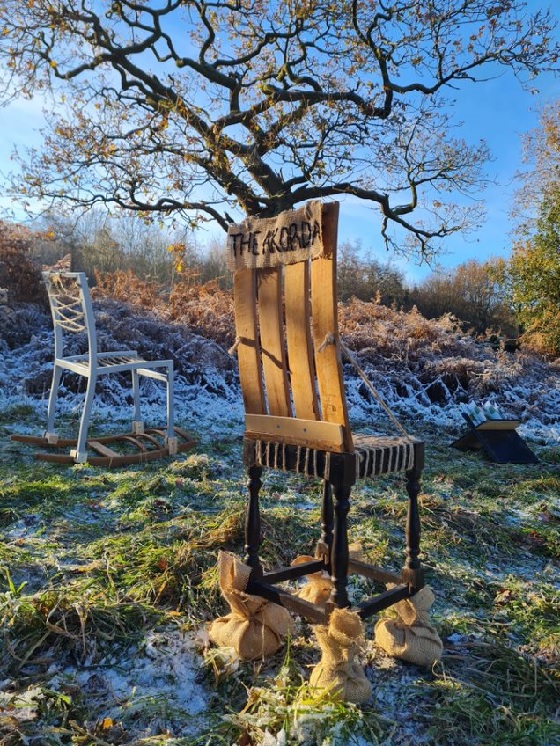
‘Human-Nature’
Designed to draw visitors into otherwise unexplored areas of the forest, this idea highlights the contrast between the areas that are rigidly planted and others left to grow wildly.
Student Owen Thomas said: “We used reflective materials to produce a structure that, as you walk through it from an open space, distorts your view before you emerge into the forest.
“The idea was that the installation was noticeable from a distance so it would draw people to the threshold of the forest, encouraging them to explore a space that they otherwise probably wouldn’t have found.”
The group learned both technical and teamworking skills as part of the project, being given creative freedom by their tutors to create a full-sized version of their designs.
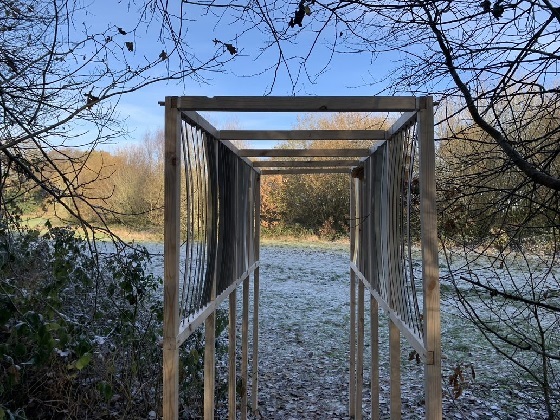
“Working in a group that doesn’t have a leader can be difficult but we learned really good ways of overcoming that, including by creating prototype models before committing to a design,” said Owen.
A highlight for Owen was the public’s engagement with their installations.
He said: “We had a lot of engagement and even suggestions which was exactly what the NF wanted. It felt great to be able to fulfil the brief and get people interested in the space.”
More about the installation process can be found at @ma_livebuild
Posted on Wednesday 8 March 2023